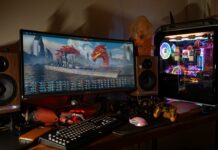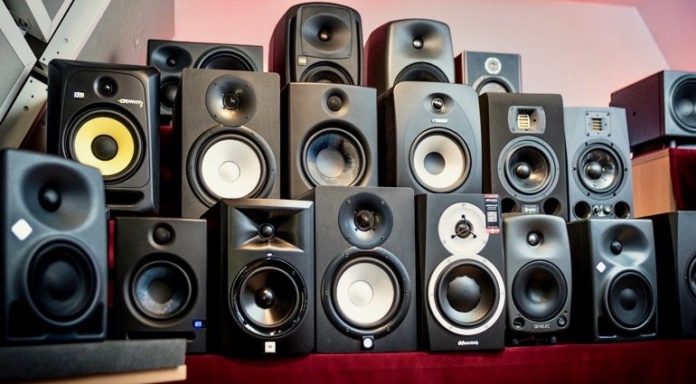
Studio monitors were created to help create a realistic picture of how what you created really sounds like. A monitor will let you hear any little issue that your audio has.
Monitors are the go-to for any producer that wants to create music that will translate as wanted to all other playback systems.
We know that choosing the right one will help you fix and improve your abilities. That is why we created this article, in order to help you choose what is best on the market.
1. JBL LSR305 Professional Studio Monitor
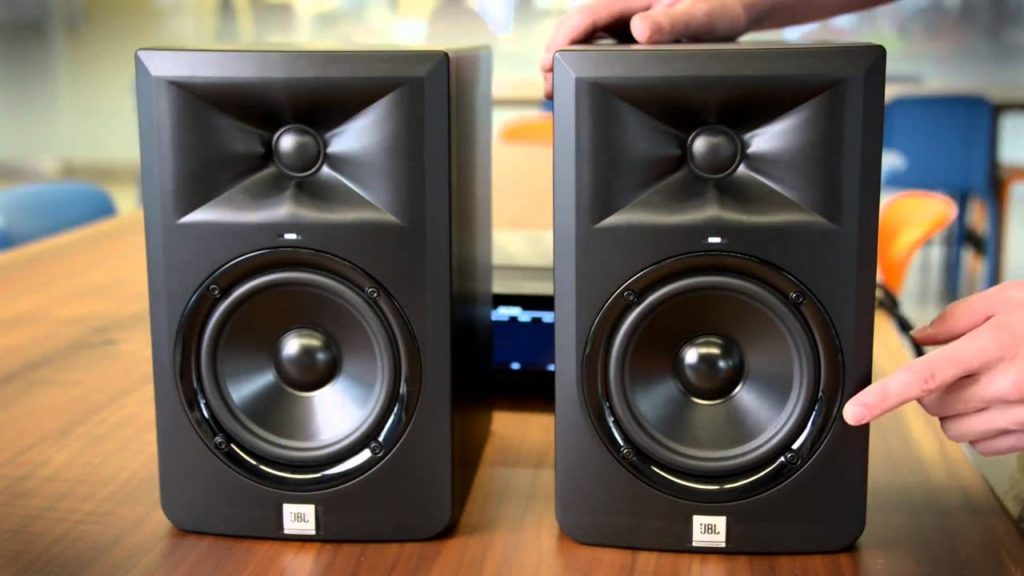
JBL is one of the most legendary players in the audio world for several years now and the LSR305 Professional Studio Monitor brings honor to the brand.With an excellent new, active design, it negates the need for an additional amplifier, thus saving on space and making it ideal for desktop producers.
The monitor offers image control waveguide from JBL which helps the producer listen to a crystal clear reproduction of their work. This similar technology is featured also on the more expensive monitors from JBL, which again, make the LSR305 a sweet deal.
Featuring a 5-inch subwoofer, balanced by a 1-inch dome tweeter, they create an astounding clarity and a phenomenal bass. You can control the volume from the rear of the speakers, place where you can also find the hi and low cut shelf controls and the XLR and ¼ TRS connections. So if you are looking for a great sound, delivered powerfully, this monitor might be a perfect choice.
2. HEDD Audio Type 20
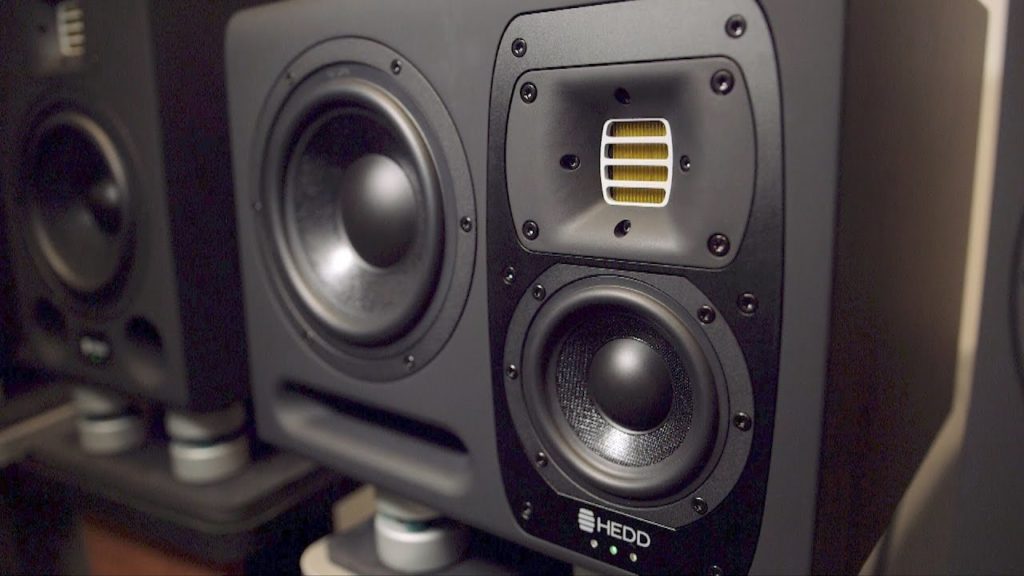
The HEDD Audio is a newcomer that generated quite a buzz in the market. Although a little bit bulky – 15kg – they come with a matte-rubber finish which makes them differentiate from the competitors.
In the back of the monitor we can find the high shelf and the low-shelf controls which range from +/- 4dB at 2kHz for the first and +/- 4dB at 200Hz for the latter. Also in the back we can find an optional card that can be fitted for Dante/AES67 inputs, the balanced XLR and unbalanced RCA inputs, and a slot for HEDD’s Bridge system.
On the front we will find a three-way design, which consists of a 7.2-inch subwoofer, a 4-inch midrange driver and 1-inch ‘Air Motion Transformer’ tweeter. They have a frequency response of 32 Hz to 50 kHz. With an exceptional low-frequency response – bass weight and detail’, the Type 20 is far from disappointing throughout the entire frequency spectrum.
Be it for your home or a mastering studio, if you are serious about producing, mastering or mixing, the HEDD Audio Type 20 is a must-have.
3. Neumann KH 120A Active Studio Monitor
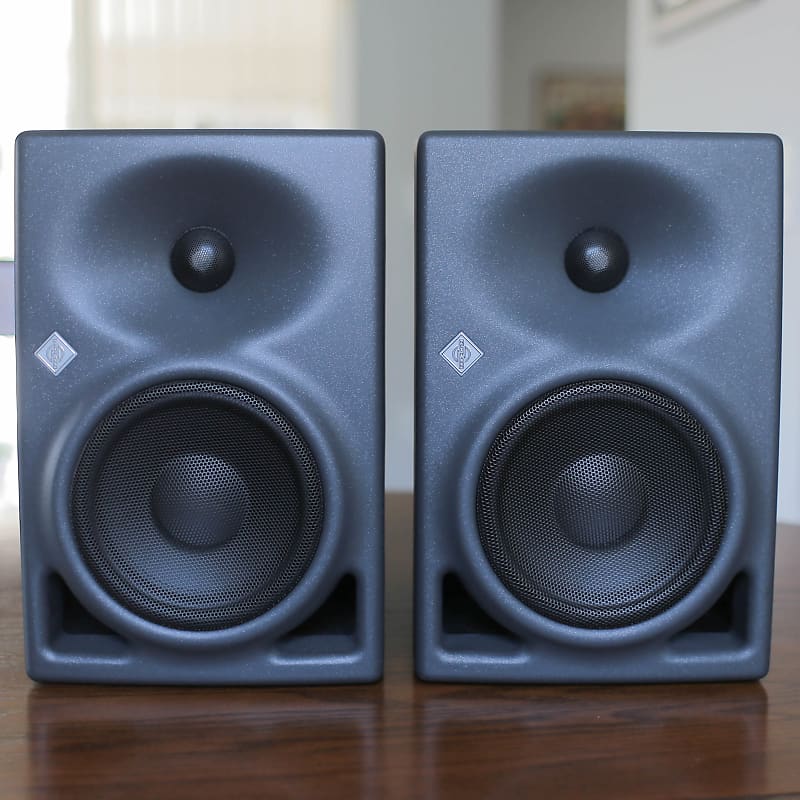
Although Neumann is on the studio monitor market only since 2010, they set themselves as a top player in the domain. The KH 120A features an elliptical MMD – Mathematically Modeled Dispersion – waveguide that offers a smoother off-axis response. With its bi-amplified two-way monitoring speaker system – 50 Watt + 50 Watt -, featuring a 5.25-inch long-throw woofer and 1-inch titanium fabric dome tweeter, this studio monitor delivers incredible sound – both a tight low end and clarity in the hights -.
The strong construction of the monitor is made of compact, durable aluminum that minimizes resonances and offers better heat dissipation. The horizontal dispersion is wide and the vertical is narrow both giving great control at the mixing console. The clean-lined metal design oozes quality and reflects typically fine German industrial craftsmanship. Even the light-bearing the logo on the front, which is adjustable, looks classy.
Owning the KH 120A feels like something very special in terms of both performance and quality of manufacture.
4. KRK Rokit 7 G4

Although the KRK Rokit has been in the market for a while now, it has received a great upgrade. The amplification is now class D – previously class AB – meaning that it drives the speakers evenly and improves audio integrity. It now has yellow Kevlar HF units ass well which minimize listening fatigue.
The accompanying brickwall limiter engages automatically at maximum amp-level in order to maintain a balanced sound, thus protecting the system and offering better and wider dynamics.
The enclosure of the monitor is low resonance for minimal distortion. A layer of high-density iso-foam pad is between the speaker and the surface to improve clarity by minimizing the vibration transmission. On the back of the monitor, we will find a combo of XLR/TRS socket, the power inlet, switch and a backlit logo that shows if it’s on or not.
DSP-driven Room Tuning with 25 visual Graphic EQ settings helps minimize and correct problems in your acoustic environment. If you decide to pick this one you should also know that it works with the KRK App to set up your room for better monitoring and faster mixing. For more information on the KRK Rokit, check out Musiccritic.com.
5. Adam Audio A7X Powered Studio Monitor
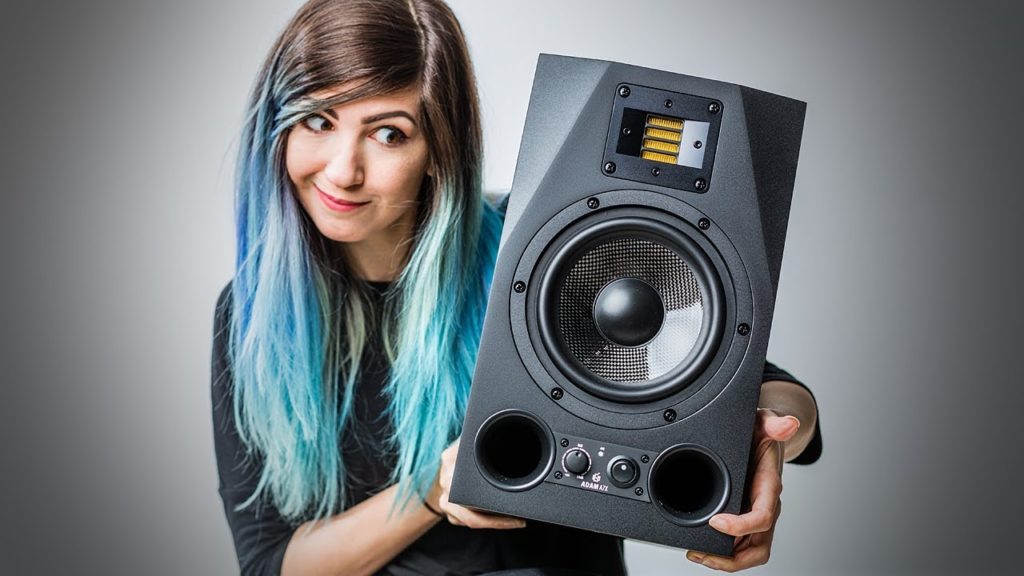
The Adam Audio A7X is the most sought after in the AX series. The AX series, including the A7X, incorporates a unique, very high tech X-ART tweeter. The tweeter extended the frequency response up to 50kHz and has a higher efficiency and higher maximum sound pressure levels.. Keep in mind that humans can only distinguish sounds up to 20kHz.
This integrates perfectly with lower frequency due to the new 7 mid-woofer which now has a bigger voice coil – 1.5 – and is driven by a very powerful amplifier. Both the tweeter and the mid-woofer have their own dedicated amplifiers.
The front panel has a power switch and a control volume that retain the volume settings. On the rear we can find multiple additional controls. One gain for the high frequencies – 4dB – and two shelf filters for high and low frequencies – XLR and RCA connectors –
This studio monitor will literally blow you away at how detailed the sound is coming out of it. Much so, you do not need an equalizer. The A7x will deliver the cleaner sound you are expecting, even in low frequencies. This will take away the fatigue when you are working or just listening to music for pleasure.
Conclusion
We hope that our top was helpful and you now clearly know what monitor to choose and by what criteria.




